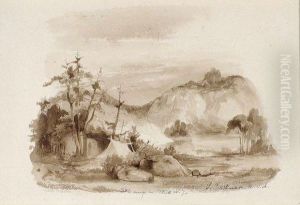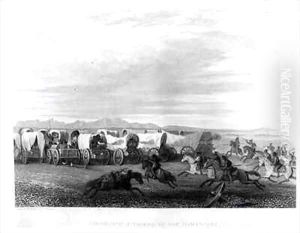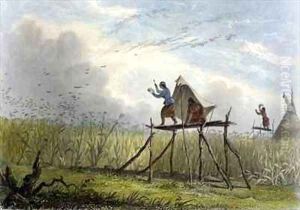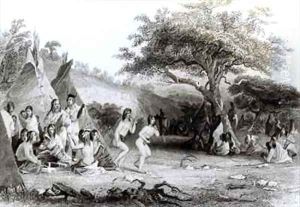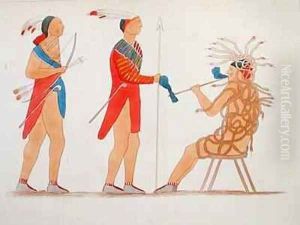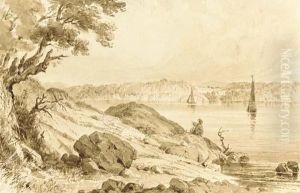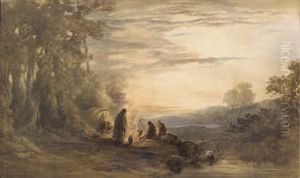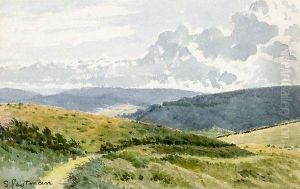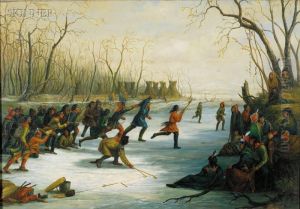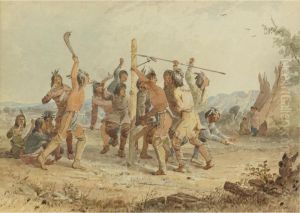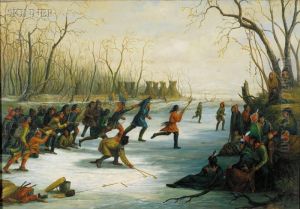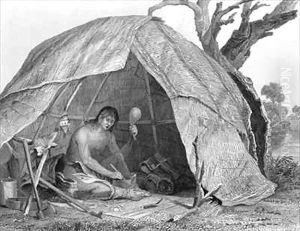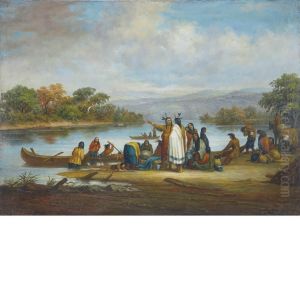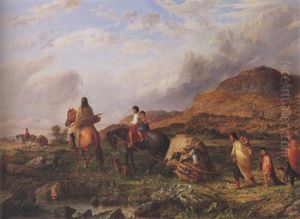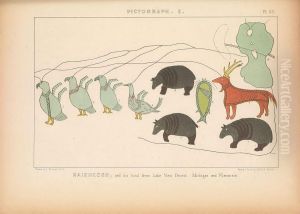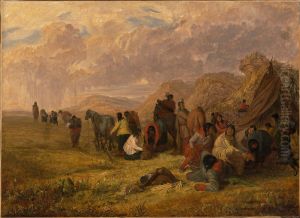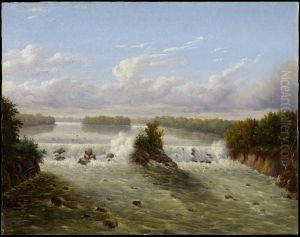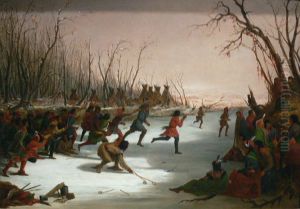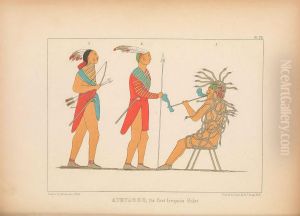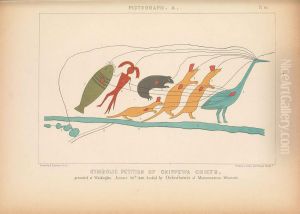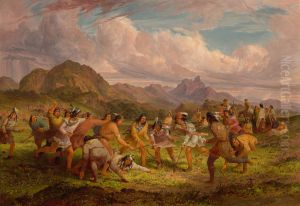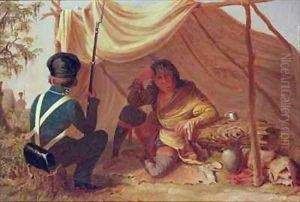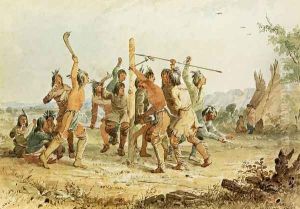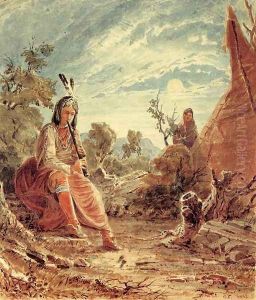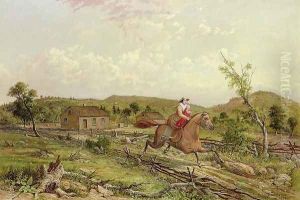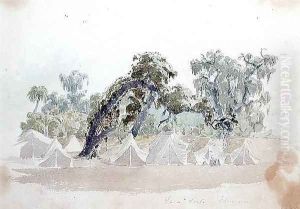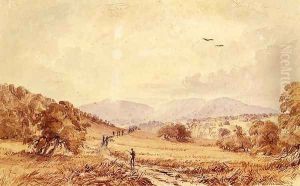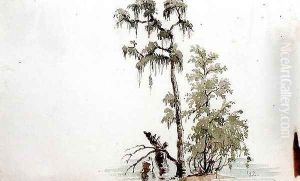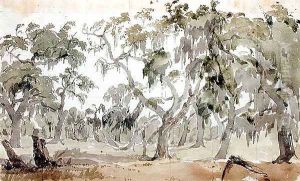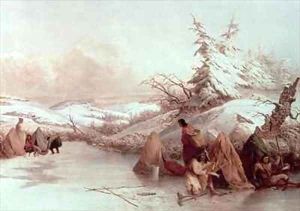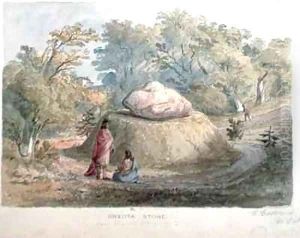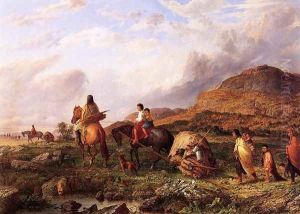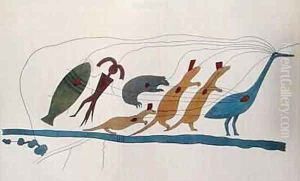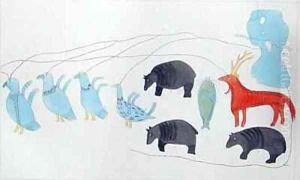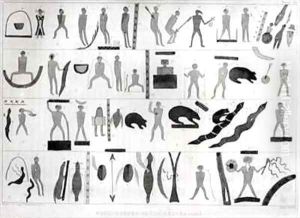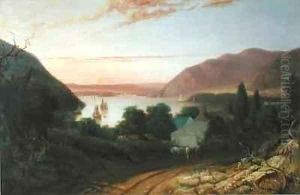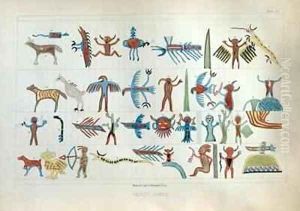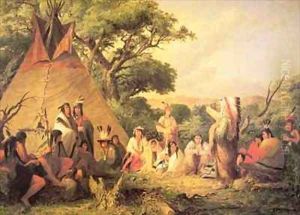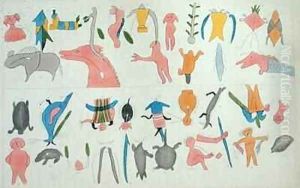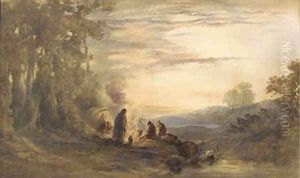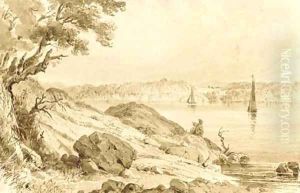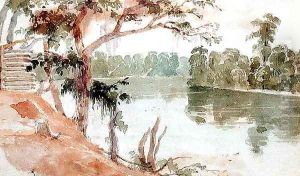Seth Eastman Paintings
Seth Eastman was a prominent artist and military officer known for his detailed illustrations of Native American life and landscapes of the American frontier. Born on January 24, 1808, in Brunswick, Maine, Eastman pursued a career in the military and graduated from West Point in 1829. While serving in the U.S. Army, he was stationed at various frontier posts, where he had the opportunity to interact with Native American communities.
Eastman's artistic talents were recognized early in his military career, and he often combined his military duties with his passion for art. He was an astute observer of Native American cultures, and his artworks are considered important historical records of the people and customs that he encountered. Eastman's paintings and sketches portrayed the everyday life, ceremonies, hunting practices, and battles of various tribes with a high degree of accuracy and detail.
In the 1840s, Eastman was stationed at Fort Snelling, located at the confluence of the Mississippi and Minnesota rivers, which is now part of Minnesota. This period was particularly productive for Eastman as he created a significant number of his works depicting the Dakota Sioux community and the surrounding landscape.
Later in his career, Eastman was commissioned by the U.S. Congress to create a series of illustrations for Henry Rowe Schoolcraft's comprehensive study on Native American tribes, 'Historical and Statistical Information Respecting the History, Condition, and Prospects of the Indian Tribes of the United States.' This six-volume work, published between 1851 and 1857, was enhanced by Eastman's detailed drawings, which contributed to its value as a resource on Native American culture.
Seth Eastman retired from the military in 1863 with the rank of captain. He continued to paint and draw, leaving behind a rich legacy of artwork that provides a visual history of a changing America and the lives of its Native people. Eastman died on August 31, 1875, in Washington, D.C. His works are held in several museums and have been an invaluable source for both historians and descendants of the Native American communities he depicted.
